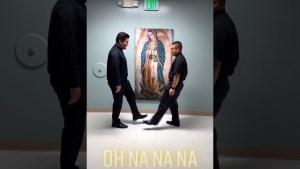TikTok is a virtual space where people—especially young people, but you’d be surprised how many older people are on the app, too—sing, act, dance, and share videos of themselves. It’s a platform for showing off.
The Chinese-owned social network, launched in September 2016, is now one of the most popular. In August, the TikTok app exceeded 2 billion global downloads, and reported almost 700 million active users in July alone. These are dizzying numbers.
Those who create videos and put them on the platform are known as “TikTokers,” and some have millions of followers. Generally their point of view is quite simple, as they seem to say, “Our imagination sets us free, and we have a lot of fun.”
To help our children use this social network correctly, we need to learn the basics about it.
How it works and who uses it
It’s very simple to use. Once you download the application on your smart phone, you can create and share music video clips between 15 and 60 seconds long, and then you wait for likes or comments.
In general, the users of this platform are young—some very young indeed, between 6 and 16 years old—and many are totally unaware of the risks they run by exposing themselves naively online.
Here are 3 rules to consider enforcing so our children will use this platform safely and intelligently:
1Don't post sensitive information
It may seem a contradiction, because TikTok is all about putting yourself out there, but you should never reveal where you live, or give detailed personal information about your habits, lifestyle, contact information, and so on. Keeping personal information private is the first rule to learn before using any social media. We don’t know who is watching us or how they could use our sensitive data.
If we allow our children to use TikTok, it’s fine to do so in an original and creative way, but with caution. Especially in the case of younger children, they should use it under the careful supervision of a parent.

Read more:
Grandmother and teen’s doorstep dance goes viral
2Remember that what is published no longer belongs to us
Every time we upload a video, make a comment or take any action on social networks, this content essentially becomes their property. Even when we delete them, they might not really be take off the platform completely.
Even if the social network truly removes the media or information, we cannot know or control how many people saw our video, comment, etc. It’s child’s play to copy digital content—it’s as simple as taking a screen shot or using another device to take a photo or video of it. Once it’s out there, we never know where it might appear.
3Be careful what you publish
Taking into account the above, we should never, not even in private chat rooms, circulate content that could in any way embarrass us or third parties. In addition to possible legal consequences, we must be remember that when we publish something online, we lose control of it. Individuals, companies, governments, etc., are constantly trying to get their hands on our private information, often for motives that are unsavory at best and life-changingly bad at worst. We don’t need to be paranoid, but we do need to be careful.
While we’re mentioning these rules in the context of TikTok, they apply equally to any and all social networks, as well as emails and other forms of digital communication. The internet offers us new and vast opportunities for communication, creativity, and productivity, but also exposes us to important risks. We need to be aware of these risks, and raise our children to be on their guard as well, so we can enjoy the benefits of the digital world with appropriate caution for safety.

Read more:
Dancing priest goes viral on TikTok with videos for kids
It’s prudent to be cautious, while keeping in mind that social media and apps aren’t all bad; they can be a real force for good! Some great examples are these 12 apps designed to help you pray more and grow closer to God.


